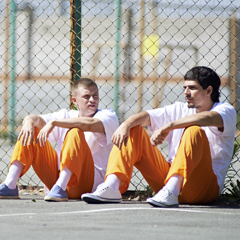Laurie Garduque, Director, Criminal Justice, shares four key lessons about equity and impact from community engagement conversations with advocates and people with lived experience in the criminal justice system.
We launched the Safety and Justice Challenge (SJC) to stimulate a broad transformation of local criminal justice systems across America. Our goal is to change justice policies and practices in a tangible and measurable way to reduce the routine, reflexive, and almost mechanical overuse of jails contributing to mass incarceration. But we also aim to change criminal justice attitudes and mindsets. We want to change not just the decisions being made, but the way decisions are approached: the values driving them, the interests consulted, the voices heard. Success, as we see it, would mean not just fewer people in local jails. Success would mean local justice systems that have been opened up and truly treat people fairly.
We have had mixed success in making progress towards these goals. Jail population numbers have fallen in the communities we support, and we have good reason to hope that, over time, the practical demonstration that jail usage can be safely reduced will prompt change nationally. But the “opening up” of local justice systems has proved harder.
Most Safety and Justice Challenge communities, even those that now use their jails less, continue to use them disproportionately for people of color, particularly individuals who are Black, Indigenous, and Latinx. Data collected by cities and counties participating in the Safety and Justice Challenge has made this problem more transparent and has helped identify where in the system disparities occur most.
We have found that most judges, prosecutors, defenders, sheriffs, and other justice system partners do not know how to effectively engage community members as equals, be accountable, or share power. We have taken steps to support learning and experimentation in this area, making grants for community engagement activities, and bringing on new technical assistance providers. Still, few of our system partners have found ways to work consistently with community members on an open and equal basis.
In December, we convened two virtual meetings with a broad array of community advocates and representatives, the majority of whom had direct experience with the criminal justice system, as victims, as formerly incarcerated individuals, or both. The sessions surfaced a wealth of wisdom and experience, and four lessons emerged.
Remember the Importance of Language
“A good first step is language—language is incredibly important,” one of the participants pointed out. “The SJC should start articulating a commitment to ‘eliminate’ disparities instead of ‘reducing’ them.” The other participants agreed.
Our caution and modesty in stating a measurable, accomplishable goal (“reducing”) had landed completely wrong and was perceived as toleration for a certain amount of discrimination and injustice. The meetings reminded us that reform is not enough for many people closest to these issues. “We need to abolish this system, not reform it,” as one of our advisors put it, “and we should say as much.”
Examine How We Make Grants
We were urged to use our grantmaking to rectify power imbalances and exclusion in local criminal justice systems. The Safety and Justice Challenge mainly funds system actors—with non-system community stakeholders receiving support indirectly, if at all. “[But] if we believe the system is racist,” one advisor asked pointedly, “why are we relying on system actors to determine who participates in system reform?”
Another suggested that we “focus on expanding allies to include more grassroots advocates, empower local leadership of grassroots organizations, and form intersectional coalitions of allies with varying specializations to attack the issues from all angles.”
And, we were told, we should be explicit about what we are doing: “Grantees should be required to list key stakeholders on the grant who are Black, formerly incarcerated, or have a proven track record demonstrating their ability to work with the community.”
Equip and Empower Community Leaders
Many of the people attending had direct and painful experiences with the justice system, and all agreed that people who know the most about the problem should lead the search for solutions. “It’s imperative we engage directly impacted communities,” a participant said. But, he added, “A false sense of power is not power; you can put people on committees and invite them to panels, but if you’re not resourcing these efforts, these token efforts are insignificant.”
Think Beyond Criminal Justice
Many of our advisors argued that we should take a much broader view of what constitutes criminal justice reform and how we define safe communities. If we want safe communities, they suggested funding workforce development, partnering with public school systems, or supporting re-entry.
They also urged us to expand our sense of what is possible. “We are trying to get people to radically reimagine,” one advisor said of her work. “My organization has engaged thousands of people in creative practices, and every time we find that when we move into the creative mind space, it breaks us free of this narrow view of what’s possible.”
Next Steps
From these lessons, we plan to rethink the role of community engagement in the Safety and Justice Challenge. To support this goal, we will expand and diversify our formal advisory structure to include people with lived experience, find ways to partner with and invest in community-based organizations and leaders, use our funding to take bolder actions, and be more explicit in our language and goals.




